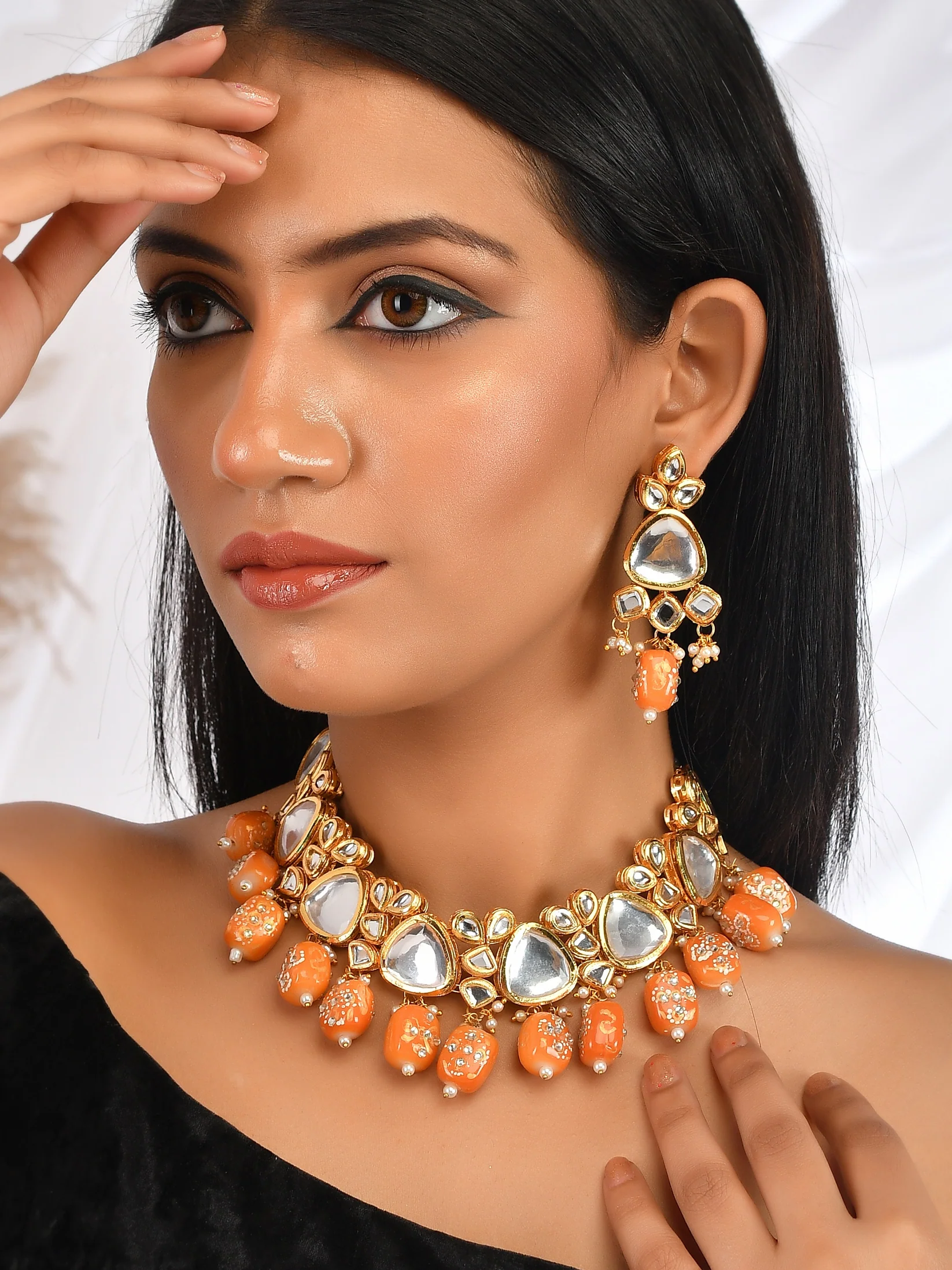Jewellery Design Guides and Brand Insights
Traditional Jewelry Designs in India: A Guide
Jennifer Olson
June 30, 2025India’s rich cultural tapestry is woven with threads of history, art, and tradition—and nowhere is this more beautifully expressed than in its jewelry. Traditional Indian jewelry goes far beyond mere ornamentation; it’s an art form steeped in symbolism, crafted with devotion, and cherished through generations. Each region of India boasts unique styles and techniques, reflecting the diversity of the nation’s heritage.
The Historical Roots of Indian Jewellery
Jewelry in India dates back over 5,000 years. The Indus Valley Civilization showcased exquisite craftsmanship in beads, gold, and semi-precious stones. Ancient scriptures and temple carvings also reveal the significance of jewelry in Indian society—not just as adornment, but as a marker of status, spirituality, and protection.
Through the ages, successive dynasties such as the Mauryas, Guptas, Mughals, and Cholas contributed their influences. The Mughal era, for example, introduced the use of precious gems and elaborate designs inspired by Persian aesthetics. Even today, many traditional motifs have roots in these ancient times.
Regional Styles: A Tapestry of Traditions
Kundan and Meenakari (Rajasthan)
Kundan jewelry is one of India’s oldest forms, originating in Rajasthan. This style uses highly refined gold to set precious stones into intricate designs. Kundan pieces are famed for their elaborate settings, often paired with meenakari—colorful enamel work on the reverse side. The result is a dual-faced piece, stunning from every angle.
Temple Jewelry (Tamil Nadu and Kerala)
Originally crafted for temple deities, this jewelry features motifs like gods, goddesses, peacocks, and lotuses. Made from gold and sometimes studded with rubies or emeralds, temple jewelry is characterized by its grandeur. Today, it’s a staple for classical dancers and brides in South India.
Jadau (Gujarat and Rajasthan)
Jadau is a painstaking technique where gems are embedded into gold without soldering. Mughal artisans perfected this craft, which remains popular in Gujarat and Rajasthan. Jadau sets are often seen at weddings and major festivals.
Polki (Rajasthan)
Polki jewelry uses uncut diamonds set in gold foil—giving a raw yet royal look. Unlike polished diamonds, polki stones retain their natural shape and luster, making each piece unique.
Pachchikam (Gujarat)
Originating from Gujarat and Kutch, pachchikam is made with silver and glass stones. It’s less refined than kundan but cherished for its rustic charm and affordability.
Navratna (Pan-India)
Navratna means “nine gems.” These pieces combine diamond, ruby, emerald, yellow sapphire, blue sapphire, cat’s eye, coral, pearl, and hessonite. Navratna jewelry is believed to bring balance and good fortune.
Also you can see many Gold Kangan Designs available. These type of Bangles you can see in classic and elegant to elaborate and modern
Signature Pieces Across India
Indian traditional jewelry isn’t just about necklaces or earrings—it includes dozens of specific types:
- Maang Tikka: A forehead ornament worn by brides.
- Nath: Nose rings of varying sizes and complexity.
- Choker: Close-fitting necklaces popular in several traditions.
- Jhumka: Bell-shaped Jhumka earrings that sway gracefully.
- Bajubandh: Armlets worn on the upper arm.
- Haathphool: Jewelry that adorns the back of the hand.
- Payal & Bichua: Anklets and toe rings, especially in North India.
- Mangalsutra: Sacred necklace worn by married women.
- Chooda: Traditional bridal bangles in Punjab.
Each piece has cultural connotations—some signify marital status, some are protective amulets, while others are worn purely for their beauty.
Materials and Techniques
While gold is the most prominent metal used—symbolizing wealth and purity—silver is common in tribal jewelry. Precious stones like diamonds, rubies, emeralds, pearls, sapphires, and even glass or lac are used according to regional tradition and affordability.
Handcrafted techniques such as filigree (delicate metalwork), granulation (tiny gold balls), engraving, beadwork, and enameling ensure that no two pieces are exactly alike. Many artisans learn these techniques through family traditions passed down over centuries.
Symbolism and Cultural Significance
Indian jewelry isn’t merely decorative; it carries deep meanings:
- Protection: Many designs incorporate symbols to guard against evil (e.g., nazar battu).
- Spirituality: Motifs like lotus flowers or deities express devotion.
- Status & Wealth: Heavier pieces often denote affluence.
- Astrology: Specific stones are worn to balance planetary influences.
For brides especially, jewelry plays a crucial role in rituals. Each piece is selectively you choose for its ability to bring good fortune, enhancing the wearer’s prosperity and joy.
Contemporary Revival
While modern designs have gained popularity, there’s a renewed interest in traditional jewelry today. Designers are reinventing classic styles for new generations—blending old-world charm with contemporary sensibilities. Many brides now choose heirloom pieces or commission custom jewelry inspired by ancestral designs.
Artisans are also exploring sustainable practices by using recycled metals or lab-grown stones to appeal to eco-conscious buyers.
Caring for Traditional Jewelry
Proper care ensures that these treasures last for generations:
- Store gold and silver pieces separately to avoid tarnish or scratches.
- Clean with gentle solutions; harsh chemicals can damage both metal and stones.
- Periodically check clasps and settings for loose stones.
Heirloom pieces often carry emotional value—so regular maintenance is key to preserving both their beauty and sentimental worth.
Conclusion
Traditional jewelry designs in India are more than objects—they’re living legacies. Every piece tells a story of artistry, culture, devotion, and love. Whether passed down through families or worn on special occasions, these ornaments connect generations—reminding us of our shared heritage.
As you admire a delicate jhumka or a bold kundan necklace, remember: you’re witnessing not just beauty but centuries of tradition captured in gold and stone—a legacy that continues to shine bright in modern India.
All Tags
